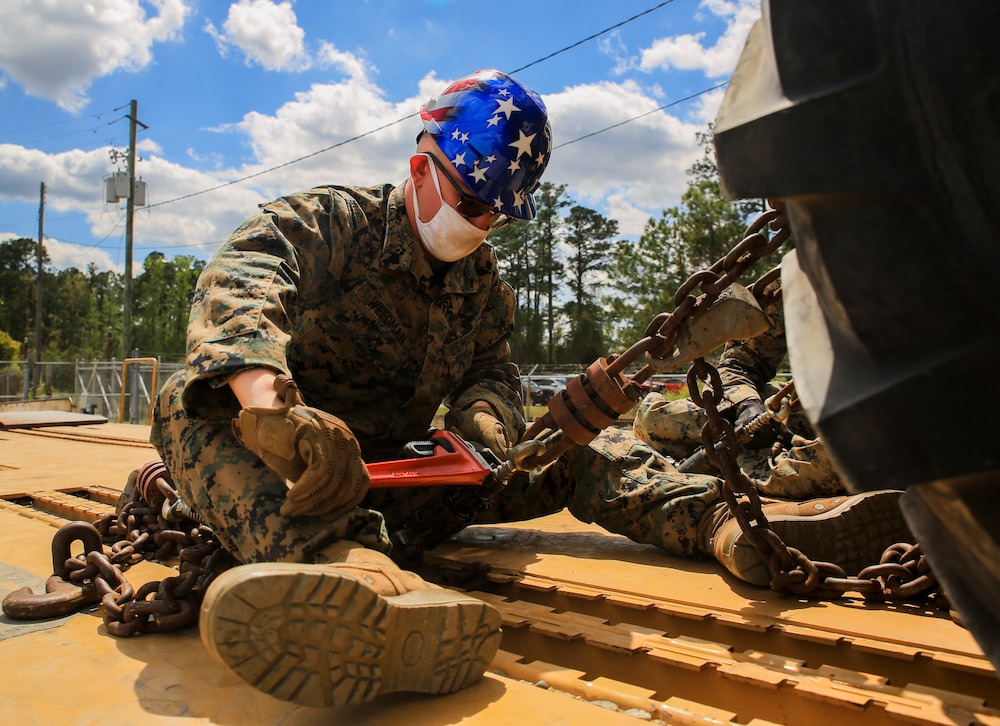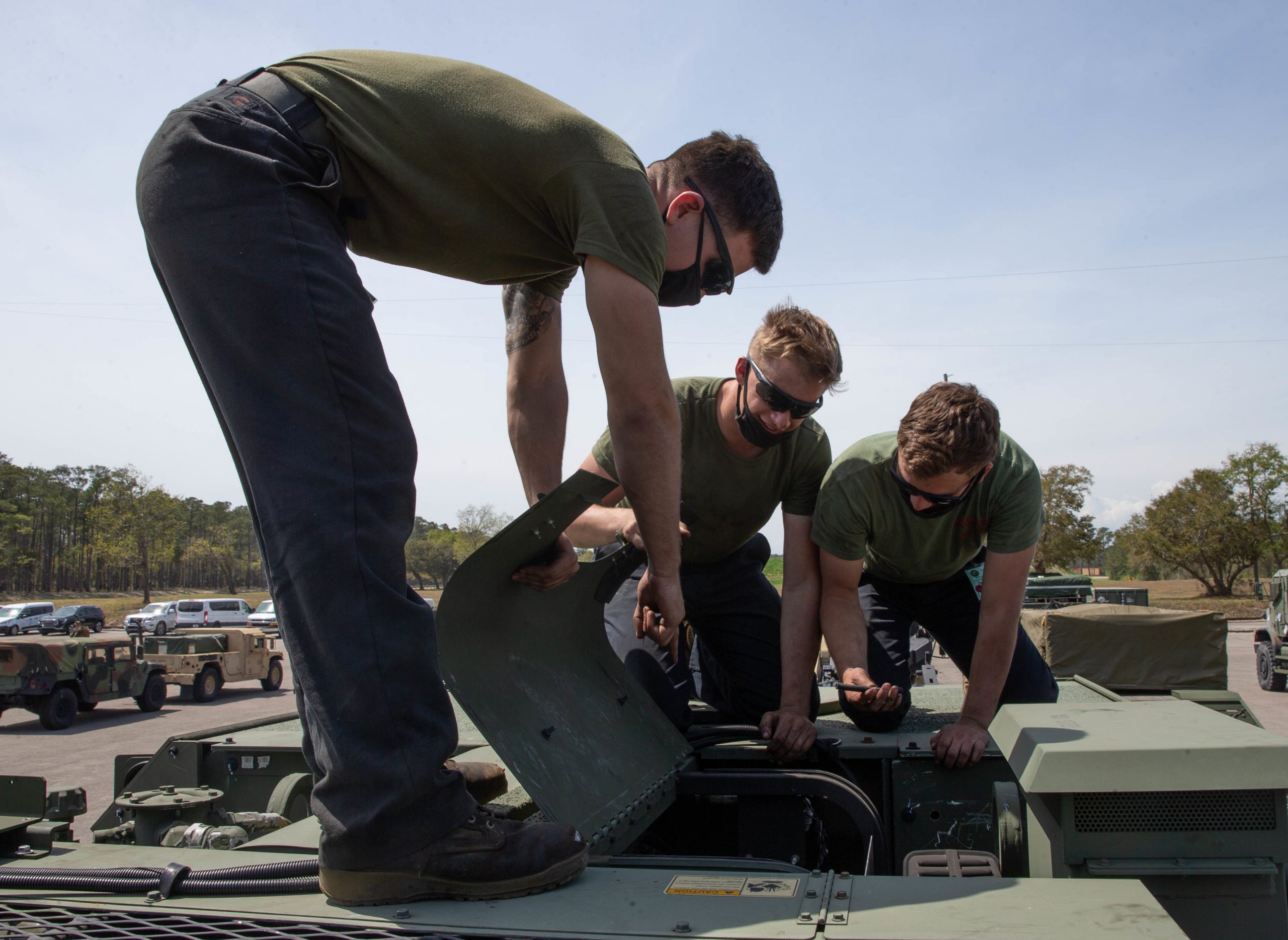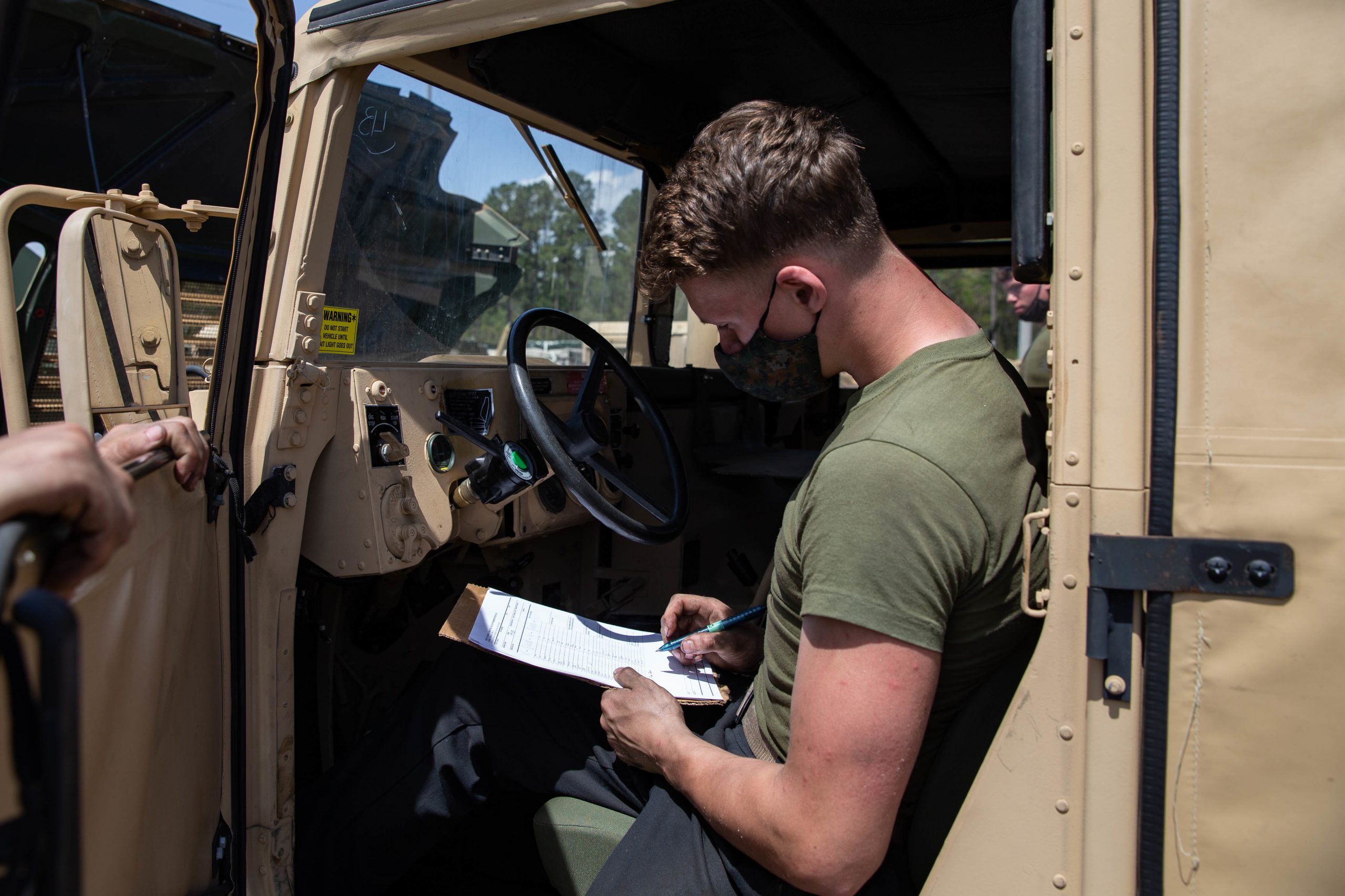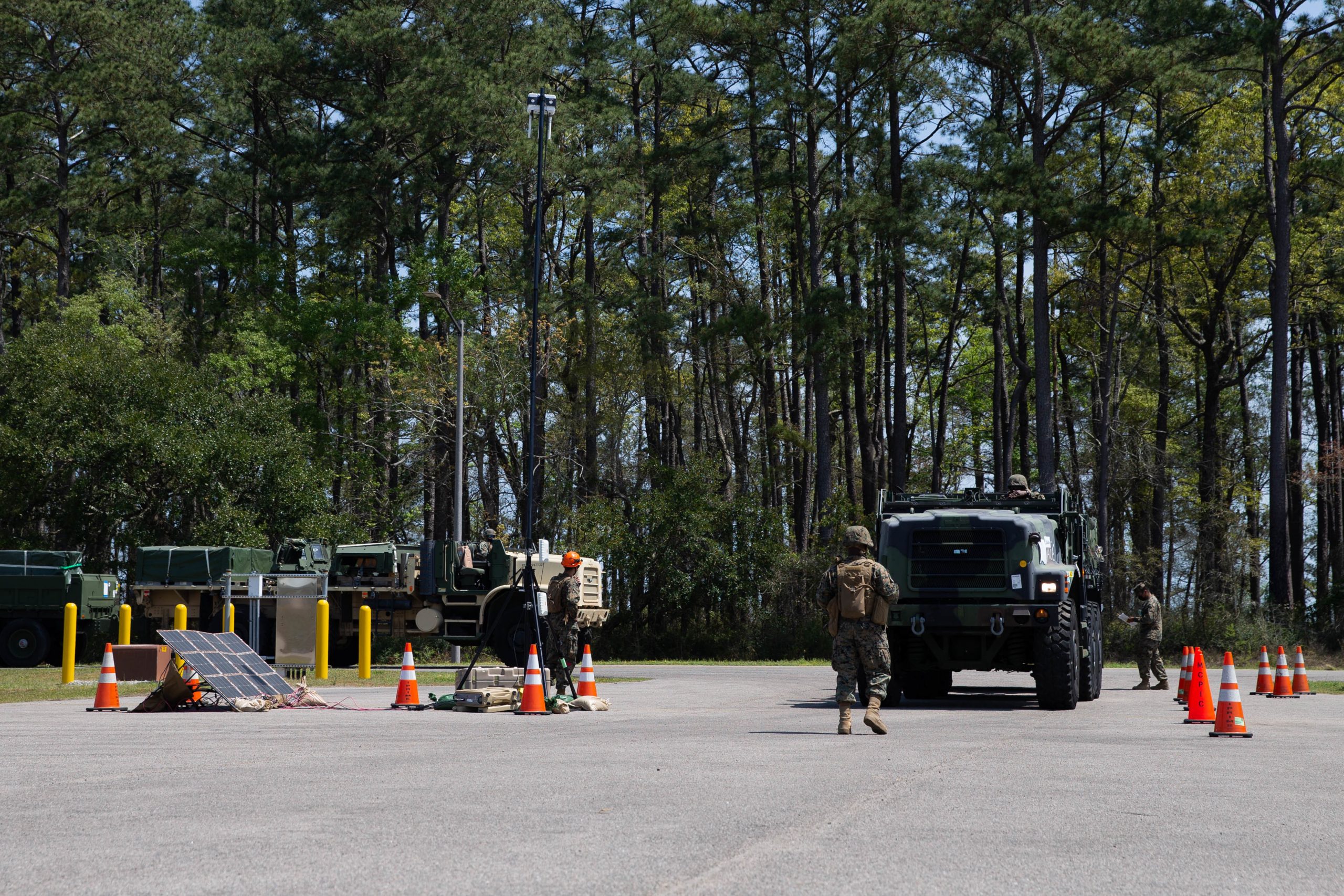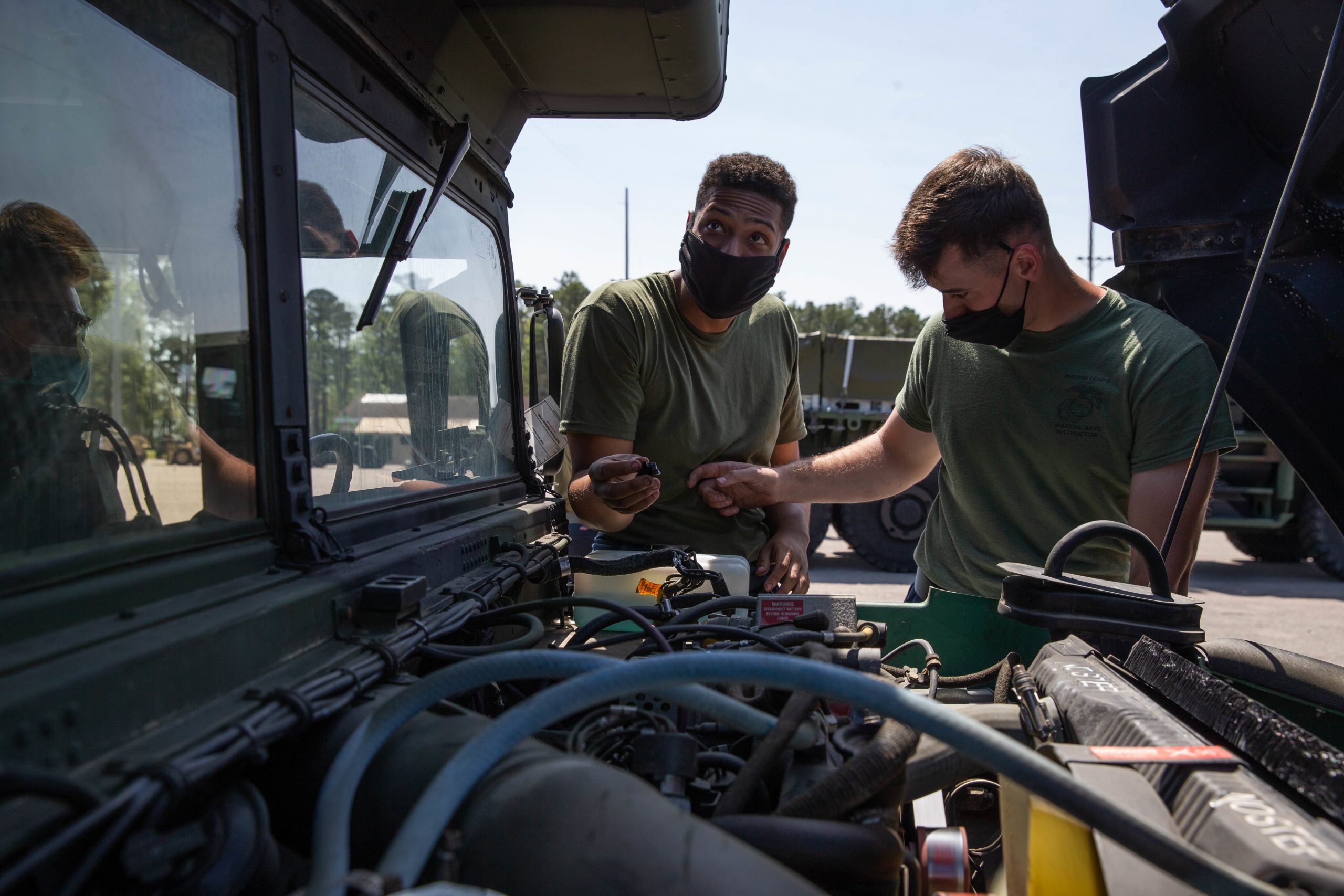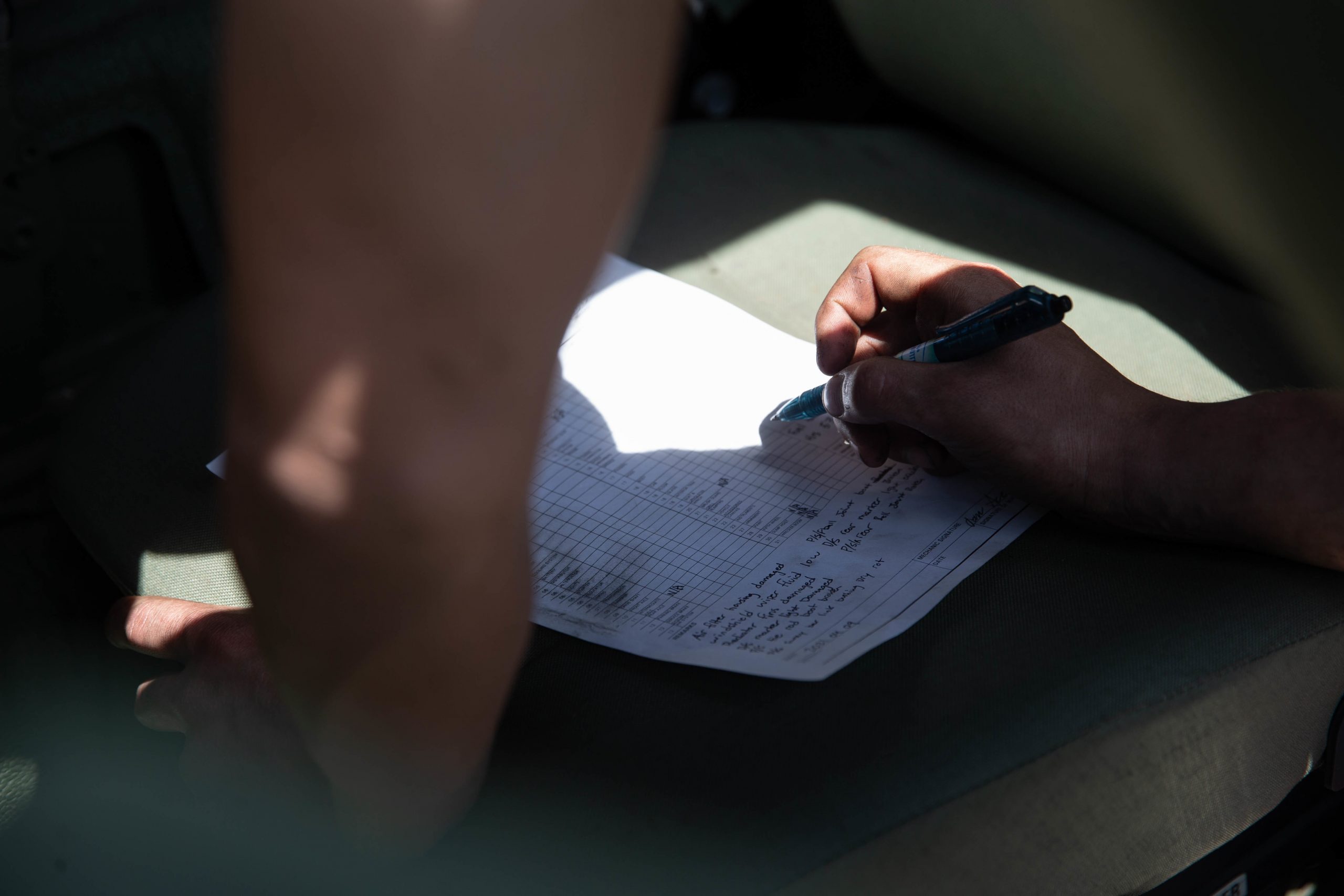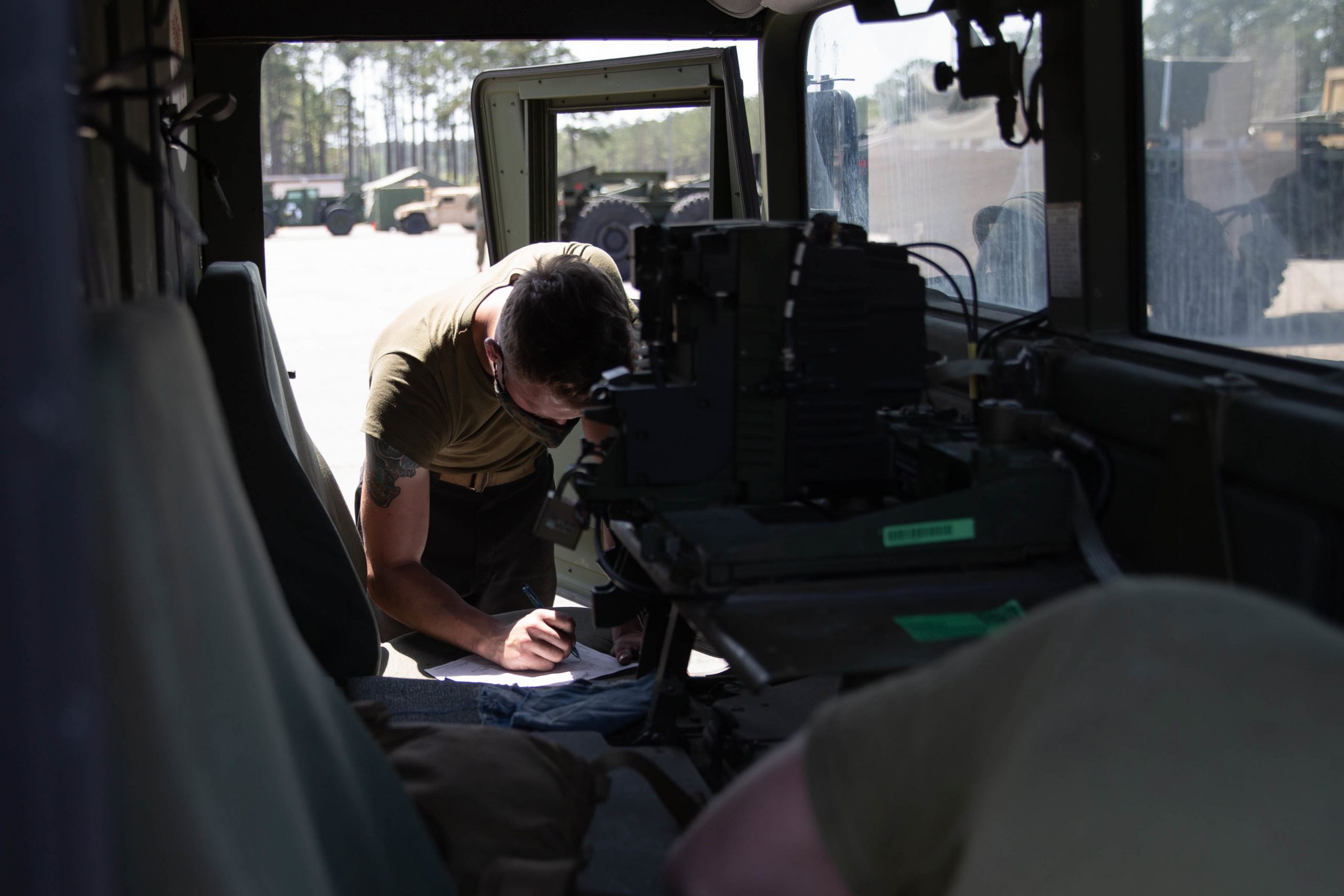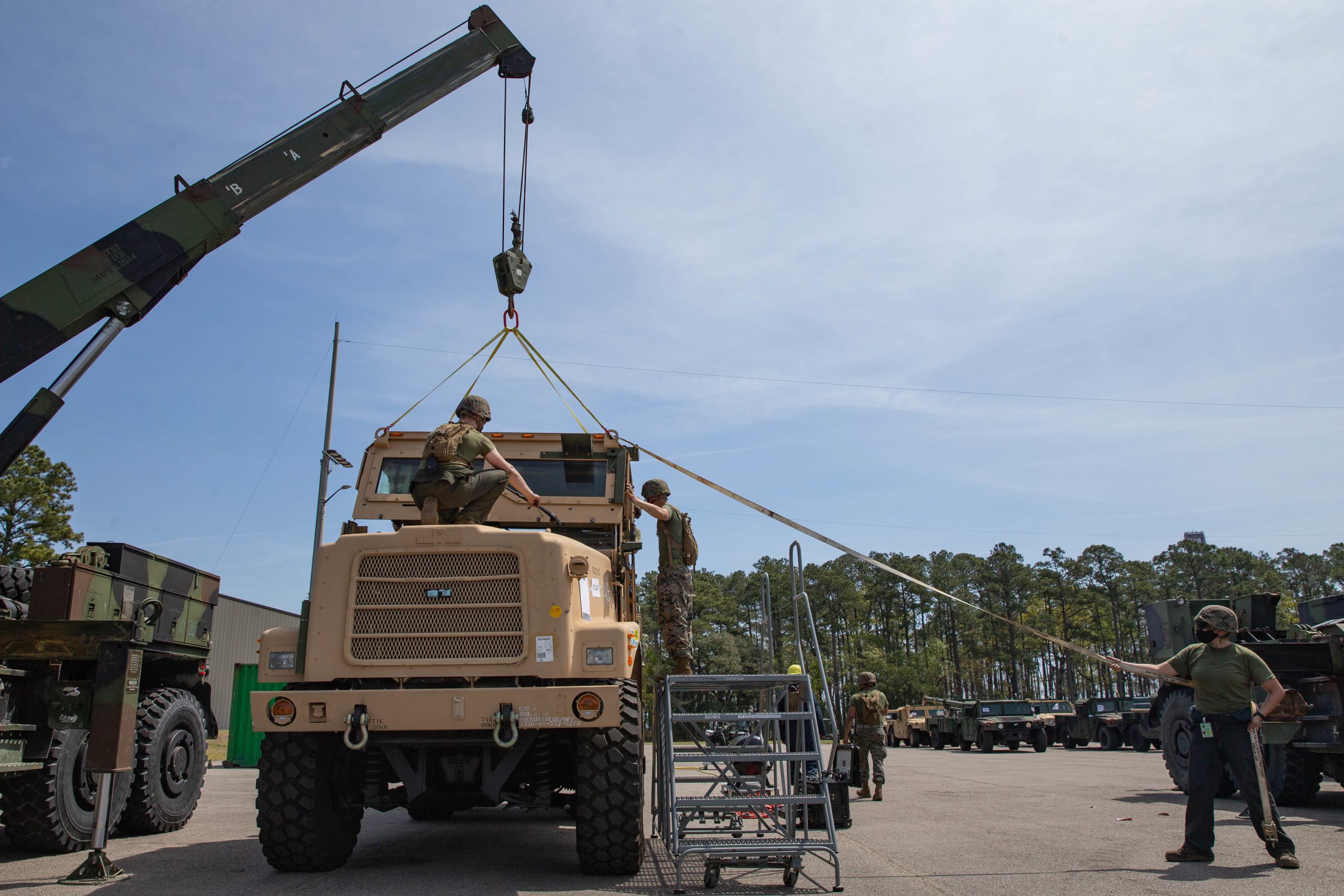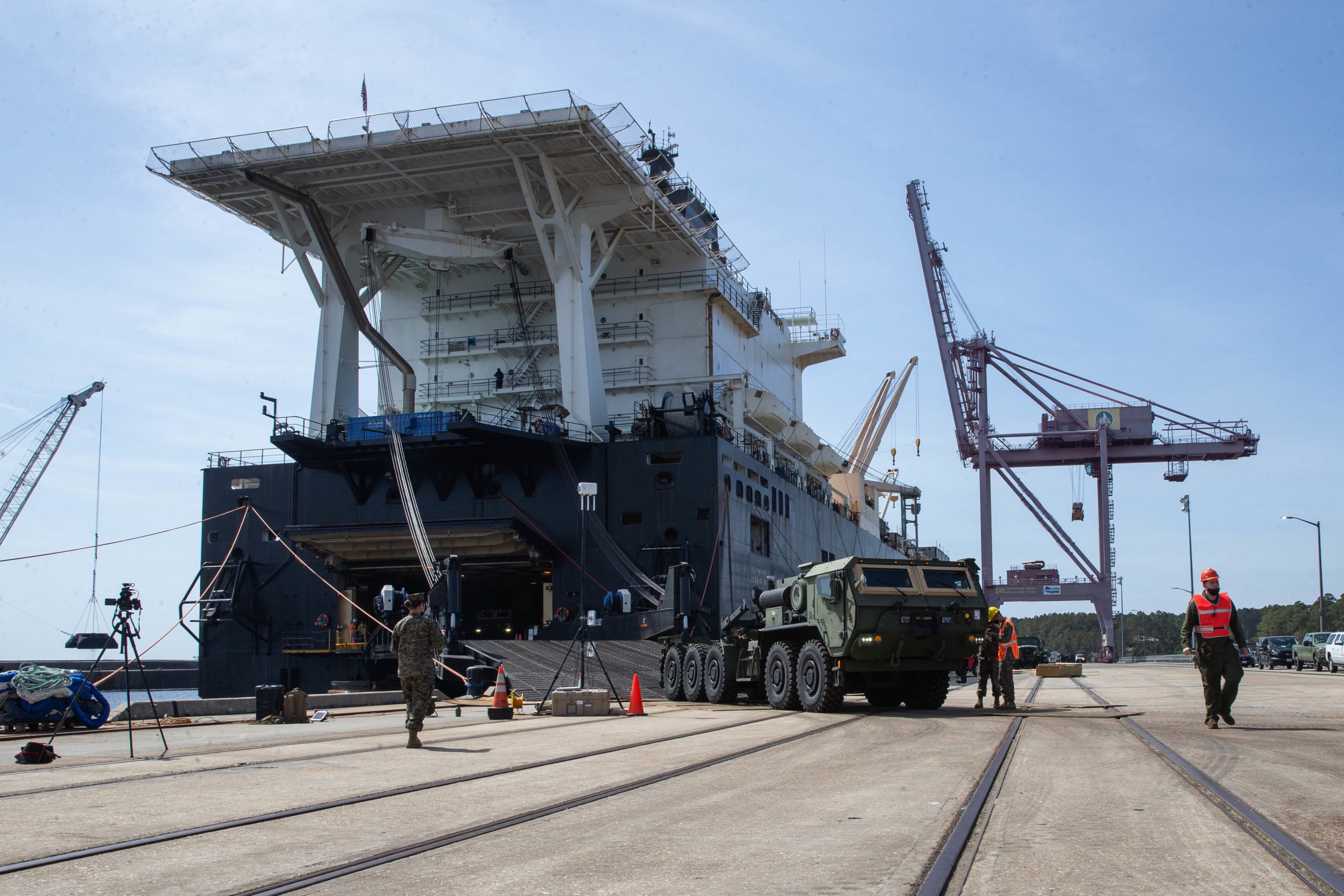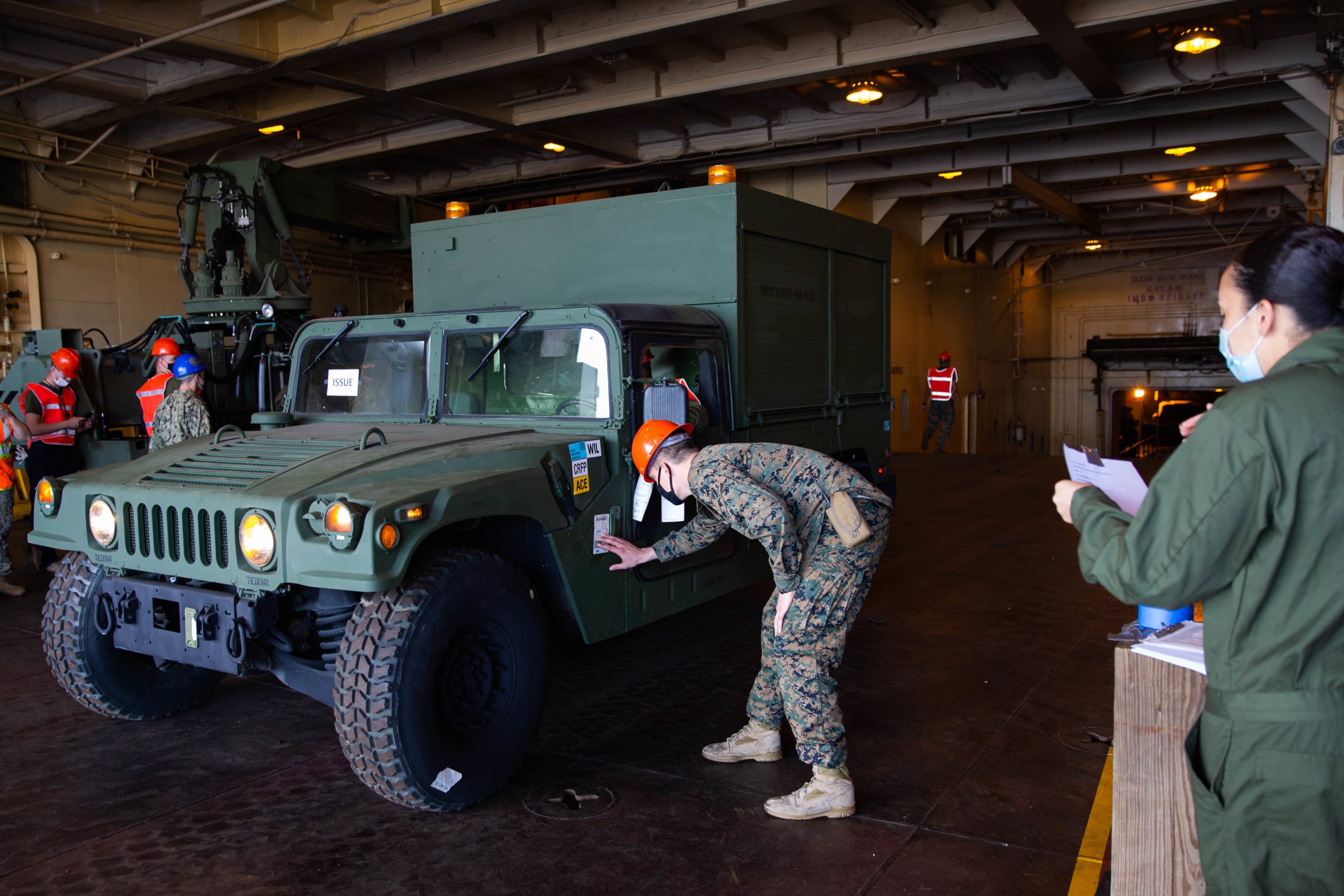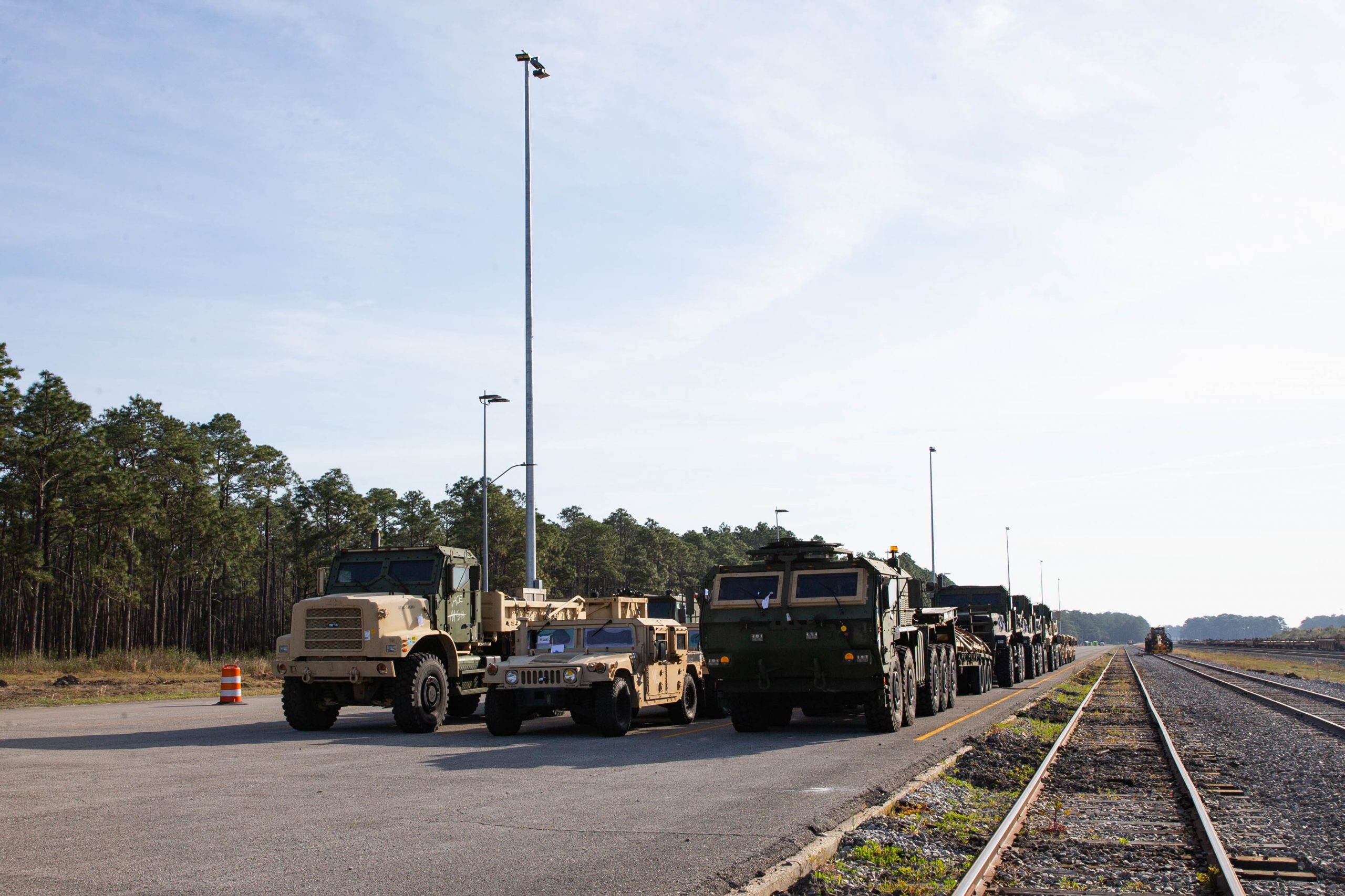By Robbin Laird
As the Marines work with the U.S. Navy to reshape capabilities for the maritime fight, two key elements for successfully doing so are the right kind of C2 for distributed integrated operations and logistical capabilities to support such a force. The logistics piece is not an afterthought, but a key enabler or disabler for mission success.
With a sea-based force the force afloat has significant capability built in for initial operations, but the challenge is with air and sea systems to be able to provide the right kind of support at the right time and at the right place.
Engaging in operations against a peer competitor means that the force needs to be able to operate end to end in terms of secure communications and logistics. Ensuring an ability to operate from home ports or allied ports is part of the security challenge; finding ways to use air systems to move key combat assets to the various pieces on the operational chessboard in the Atlantic is crucial; and having well placed and well protected stockpiled supplies which can be moved to support the force is a key part of the overall logistics puzzle which needs to be solved.
I had a chance to discuss these challenges during my visit to II MEF in April 2021 with LtCol Perry Smith, the senior strategic mobility officer. He and his team focus on the end-to-end supply to the force, through air, sea and ground movements to deploying or deployed forces. As he noted, the Marines work end to end transportation which means that “the embarkers at the units actually do all the preparation for their own equipment, do all the certifications, do all the load planning, and move their units out.”
But when force mobilization occurs for the joint force, the Marines are competing with the other services for lift support, and in North Carolina this means that they are competing with 82nd Airborne Division “for the same ports and airfields.”
The logistics piece has two key elements. First, there is the ability to support the initial deployment of the force. And secondly, there is the challenge of sustaining the force going forward?
For the Marines, the logistics piece comes in two parts, namely, support afloat and support ashore, so there is a “naval slice and a ground slice.”
For operations in the Atlantic AOR, the Marines are working with the Navy as well as key allies to work the logistics supply chain in a dynamic combat situation. This means that they need not only to work closely with the U.S. Navy but to be able to work closely with the support structures of key NATO allies in the support of European operations, including in the High North.
The Trident Juncture 2018 exercise provided an opportunity to work closely with the Norwegians on finding more effective ways to work with their domestic transportation systems, including capabilities like Norwegian ferries, to move equipment and supplies into the operational areas.
As LtCol Smith put it: “What I saw at Trident Juncture was their willingness to make this plan work because they have to. I think they depend on us in a time of need to be able to do reception staging, onward movement, and get to the point where we can back them up in a fight if we needed to.”
And to do this requires shaping as seamless as possible a logistics supply line.
As CNO Richardson stood up the Second Fleet, a key focus was on incorporating the High North into the shaping of new defense capabilities. To do so from a USMC point of view is challenging because of limited logistical infrastructure and the clear need to rely on air systems with fairly long legs, which means the Osprey and the coming CH-53K.
There is also the challenge of the environment.
As LtCol Smith highlighted: “In the Pacific, you don’t have the problems we have in the High North with sub-zero temperatures with 24 hours of sun in the summer and two hours of daylight in the winter.”
The Norwegians are very competent in such conditions and the Marines have a lot to learn from them, and leveraging the kind of clothing, and telecoms equipment which they deploy with would make a great deal of sense.
As LtCol Smith put it: “How do we take advantage of the knowledge of our allies and leverage their capabilities for our forces to enhance our own survivability and lethality?”
The communication challenges are significant. As you operate from sea, and work with an expeditionary base, linking the two is a challenge, which requires having an airborne capability to link the two.
When looking at the North Atlantic arc from North Carolina to the Nordics, strategic mobility is delivered by a triad of airlift, sealift and pre-positioning. Where best to pre-position? How best to protect those stockpiles? And how to move critical supplies to the point of need rapidly?
Reworking the Marine Corps force to work more effectively with the U.S. Navy requires a reset of the logistics enterprise.
But with the Navy in flux, the USMC in flux, and the strategic environment in flux, and our allies in flux, how do you shape effective convergence for effective combat capability?
As LtCol Smith articulated the challenge: “How do you shape convergence of your technology, your tactics, your techniques and procedures with the assets which are available to an effective combat force?”
Good question. That is challenging with the force you have, let alone for some future force.
What can be too easily overlooked is that adding new platforms, deliver new capabilities only if they can be used by the operating forces effectively and in a sustained operating environment.
Featured Photo: U.S. Marine Lance Cpl. Clay Weedman, an embarkation specialist with 2d Marine Division, ties down a vehicle onto a rail car in preparation for Operational Logistics Exercise on Marine Corps Base Camp Lejeune, N.C., April 13, 2021. During OPLOGEX, U.S. Navy and Marine Corps forces will transport material and equipment on rail and ship and conduct pier-side offload of the USNS Williams at Blount Island command, Fla. (U.S. Marine Corps photo be Lance Cpl. Samuel Lyden)
In an article published by II MEF on April 15, 2021, the latest logistics exercise conducted by II MEF was highlighted.
MARINE CORPS BASE CAMP LEJEUNE, NORTH CAROLINA – U.S. Marines with II Marine Expeditionary Force began Dynamic Cape 21.1, a live maritime prepositioning exercise that includes an Operational Logistics Exercise with a subsequent final exercise event, taking place from Apr. 7-28, 2021.
As a part of DC 21.1, 2d Marine Expeditionary Brigade, II MEF, and Combat Logistics Regiment 2, 2nd Marine Logistics Group, are participating in an OPLOGEX taking place across the eastern United States.
Locations hosting the exercise include Camp Lejeune, North Carolina; Military Ocean Terminal Sunny Point, Wilmington, North Carolina; and Blount Island, Florida.
During the OPLOGEX, U.S. Navy and Marine Corps forces will transport materiel and equipment on rail and ship and conduct pier-side offload of the USNS Williams at Blount Island Command, Florida. II MEF will also maintain an element in Camp Lejeune, North Carolina to command and control the offload while rehearsing the command’s ability to deploy, employ, and redeploy a forward element.
This exercise facilitates the rapid deploy-ability of scalable naval expeditionary forces in support of major combat operations. Marines and sailors train to increase critical expeditionary capabilities and facilitate bridging the seam between operations on land and sea.
U.S. Marine Corps Col. David R. Everly, the commanding officer of 2d MEB, said units are prepared to coordinate and respond to any situation when it comes to logistics.
“They’re ready to respond to any crisis,” he said. “An exercise like this is just another opportunity for us to show that we have a focus on all different spectrum of challenges that are hitting us, and we’re ready to respond.”
The OPLOGEX provides an opportunity for II MEF to develop, refine, and test portions of theater opening and force deployment processes to gain MEF-level warfighting proficiency and readiness.


